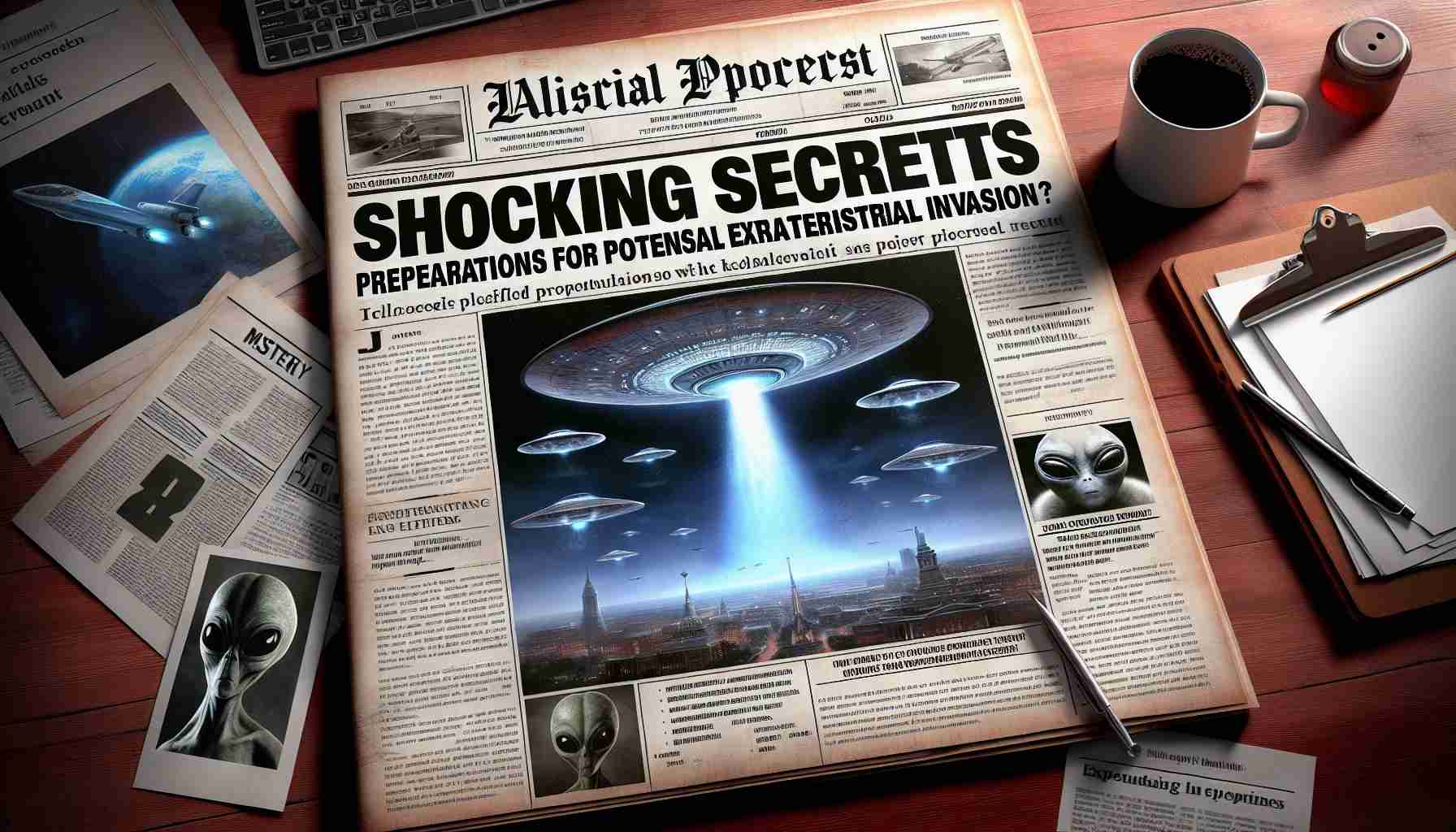- Newly declassified CIA documents reveal U.S. government concerns about a potential alien invasion during the 1950s and 60s.
- Increased UFO sightings post-1947 prompted collaboration between the U.S. and Australia to assess extraterrestrial threats.
- Key figures, including former CIA Director Admiral Hillenkoetter, suggested the government knew more about UFOs than it disclosed.
- To manage public perception, the U.S. government employed tactics of ridicule and misinformation regarding UFO reports.
- Efforts to debunk UFO sightings included restrictions on personnel discussing these phenomena, with penalties for breaches.
- The documents illustrate the U.S. government’s proactive role in shaping the narrative around extraterrestrial encounters.
Newly declassified CIA documents have unveiled a startling chapter in history: during the 1950s and 60s, the U.S. government was seriously contemplating the very real possibility of an alien invasion. Following the infamous 1947 sighting by businessman Kenneth Arnold, who reported seeing flying saucers over Washington State, the nation became captivated by unexplained aerial phenomena.
As UFO sightings surged, a collaborative effort between the U.S. and Australia emerged, analyzing these unusual reports. A 58-page document reveals that from 1957 to 1971, officials evaluated the potential threat of extraterrestrials, paralleling the well-known Project Blue Book, which sought to unravel the mysteries of UFOs for the Air Force.
In a striking twist, top officials, including former CIA Director Admiral Hillenkoetter, hinted that the government was aware of the extraterrestrial nature of many sightings but chose to keep this information hidden from the public. To maintain control over societal reactions to potential contact, they resorted to tactics of ridicule to dismiss UFO concerns and mitigate fear.
Additionally, the government launched initiatives to debunk UFO sightings instead of fostering public discourse. This strategy included restricting how personnel could discuss these phenomena, imposing severe penalties for anyone who dared to uncover the truth.
Amidst all the speculation, one key takeaway emerges: the U.S. was not just a passive observer of UFO phenomena but rather an active participant in a systematic approach to control the narrative around potential extraterrestrial threats. Could the truth have been far more alarming than we ever imagined?
Unveiling the Hidden Truth: What the CIA Documents Reveal About Government Actions on UFOs
Newly Declassified Insights on UFOs and Government Response
Newly declassified CIA documents shed light not only on the discussions of a potential alien invasion but also on broader implications regarding government actions, public perception, and ongoing developments in UFO research. The documents emphasize not only historical contexts but also set the stage for current discussions about unidentified aerial phenomena (UAPs) and their implications on national security and public awareness.
# Key Features and Trends Revealed in the Documents
1. Market Analysis of UFO Technologies:
– The declassified documents indicate an interest in the technological advancements correlated with reported sightings of UFOs. This includes the potential for inventions that could stem from reverse engineering potentially discovered technologies.
2. Innovations and Research Programs:
– The information reveals that various government agencies were involved in research programs examining aerial technology, enhancing capabilities in radar and detection systems that can differentiate between conventional and unexplained aerial phenomena.
3. Public Discourse and Sustainability of UFO Research:
– The documents indicate that public discourse around UFOs has surged in recent years, leading to a more open dialogue about previously undisclosed sightings and the government’s role. The opportunity for sustainable, transparent research into UFOs and UAPs is increasingly feasible.
4. Limitations of Initial Investigations:
– It was noted that initial investigations were limited due to bureaucratic constraints and a lack of advanced technologies, leading to inconclusive results that further fueled public skepticism.
Frequently Asked Questions
1. What actions did the government take in response to UFO sightings?
The government actively engaged in debunking UFO sightings to control public reaction, implementing policies that discouraged open discussions and imposed penalties for disclosures. This approach aimed to prevent panic and maintain a narrative of ridicule towards UFO concerns.
2. How has public perception of UFOs changed in recent years?
There has been a significant shift in public perception, transitioning from ridicule to intrigue. With the release of these government documents and increased media coverage, people are more open to discussing UFOs, and the legitimacy of UAP investigation has gained recognition.
3. What implications do these findings have for future UFO research?
The findings suggest a renewed interest and potential funding for research into UAPs. As the stigma diminishes and calls for transparency grow, the implications could lead to clearer data collection methodologies and the establishment of frameworks for international cooperation on aerial phenomena investigations.
# Suggested Related Links
For more insights into the government’s handling of UFO phenomena and related topics, visit:
CIA Official Website
NASA Official Website
History Channel
The documents are a significant historical resource that shifts the perspective surrounding government engagement and the UFO phenomenon, paving the way for a future where dialogue about UAPs is normalized and encouraged.
